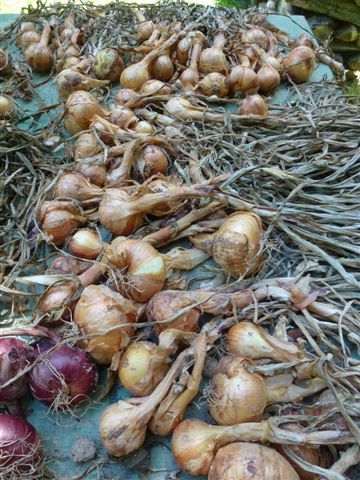
Bulb onions (Allium cepa), no matter their size, shape, or color are biennial plants that commonly set seed during their second year. They include storage onions-the pungent common yellow onions; white and red onions; and fresh, sweet onions-I cannot grow the latter in my zone 7 garden, so we won’t go into them.
Shallots (A. cepa, var. aggregatum), and their very close relatives the potato onions are perennials. If unharvested, they overwinter and begin to grow and divide the next spring, thus giving them the name, multipliers. Potato onions are more rounded in shape-the main taxonomic difference is in the leaf-sheaths of the plants-leaves of the former grow together in one sheaf, while shallot leaves have individual sheaves. Both come in red, yellow, and white cultivars; the main difference is in the flavor. Shallots, particularly the tear-drop shaped types, such as frogs’ leg and French grey are less pungent than potato onions and have a more complex flavor.
When and How to Harvest
When 25 to 50 % of onion tops have fallen naturally, most growers recommend pushing over the remaining tops. It makes sense to do this gently, with your hands or the back of a rake to minimize damage to the necks of the plants, though some walk on the onions. Withhold water for about a week to begin the curing process in the ground. The plants need exposure to the heat and light of the sun; if it rains, cover the onions and begin the curing again to get at least five days of sunshine in a row. Remove the onions from the ground before the tops rot; they should be limp and may be dry or still green. Ideally, your soil will be so friable that you can pull the onions from it by their tops without the aid of a garden fork. If you do need a fork, loosen the perimeters of the bed or along the rows well away from the onions and work carefully to not bruise or pierce the bulbs.
Curing is Essential for Storage
Once the onions are out of the ground, finish curing them by spreading them in one layer on screen, or anything you have that allows good air circulation. In very hot climates, some fold the tops over the onions to prevent sunscald. A week of curing is enough in hot, sunny weather. Allow up to two weeks of curing during times of cool, cloudy weather. Protect the onions from any dampness, whether from rain or dew. The neck, where the top meets the bulb, is the most important part of the onion to be cured and dried since it is the site where molds enter the bulbs. Thin-necked onions store best; separate thick and thin necks and plan to use thick-necked onions first.
Shallots have similar requirements for curing and drying, except that their tops fall in a more uniform manner; I have not had to push any over. Keep the shallots dry for 5 to 7 days after the tops have fallen. Pull the shallots from the ground and let them cure in the some sunshine for 4 to 5 days. Because they are smaller, shallots need less curing time, you are looking for the same result as with onions: well-shriveled necks that inhibit molds from entering the bulbs.
Since I live in an area of the country with high humidity and have had lots of scattered storms, after a few days in the sun, we put the onions on sheets of plywood and put them under an open-sided shed where they got good air circulation and were protected from rain and our heavy night dew. We left them to cure for a good two to three weeks before cleaning and preparing for storage.
Storing Your Alliums
Once cured, onions may be stored in braids or with their tops clipped. When tops are clipped, onions can be placed one, or no more than two layers deep in boxes (I use flats with ventilation in the bottom), or ten pounds or less in mesh bags. If you are into recycling and have old panty hose, onions can be dropped into the legs and knots tied between individual onions: cut below the knots to retrieve the onions. If you clip the tops, which many growers recommend, leave a 1-inch stub to dry completely. The ideal storage conditions for onions are a temperature of 35° F, and 60% humidity, similar to the home refrigerator. If you have an extra refrigerator to store onions, place them in mesh, not plastic bags, or loose in the vegetable bins. Otherwise, a cool, dry place such as a garage, or well-insulated basement will work. If new roots appear on stored alliums, the environment is too moist; if the tops sprout, the temperature is too high. I usually store shallots in well-ventilated berry boxes or hang them.
Favorite Sandwich
One of the very simplest onion dishes, perfect for non-cooks who like raw onions, is a sandwich Susan, and especially her husband Tomaso, have been making for years: peanut butter, plain or chunky, spread thick or thin on two slices of whole-wheat bread; onions, sweet or hot will do (rinse them if you like), sliced thin and placed between the peanut-butter smeared bread slices. This recipe is in Ernest Hemingway’s Islands in the Stream; the sandwich being eaten onboard the boat accompanied by a thermos of cold tea. It is a wonderful traveling sandwich-hiking, biking, kayaking, windsurfing-for it is tasty, packs easily, and isn’t messy. Bread variations are always possible, as is using leftover grilled onions; we often add thinly sliced, garden-grown jalapenos or serranos to it.


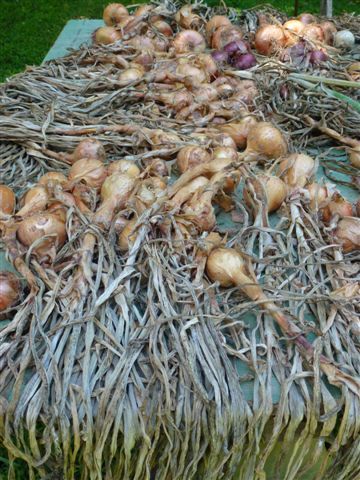

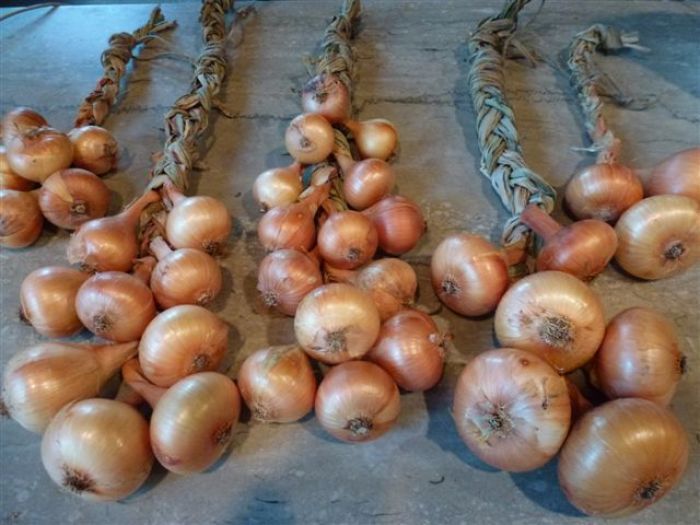
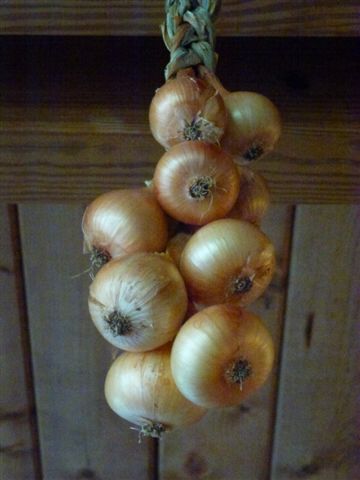
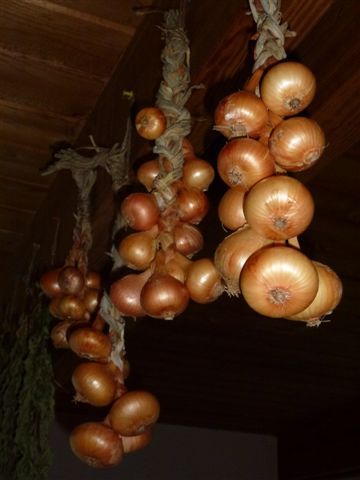
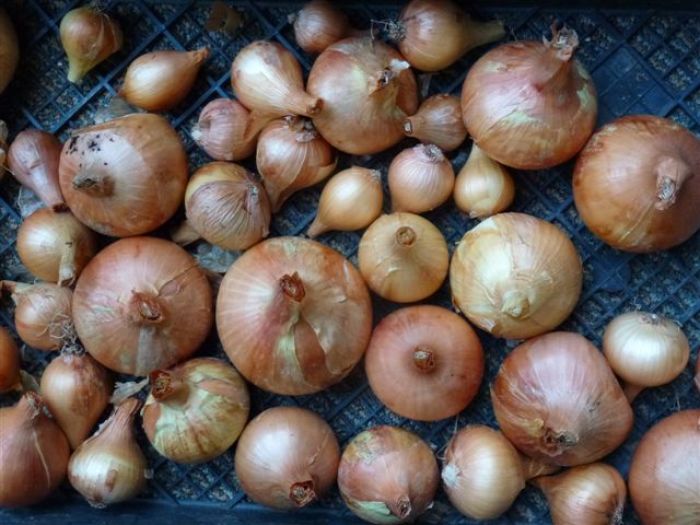
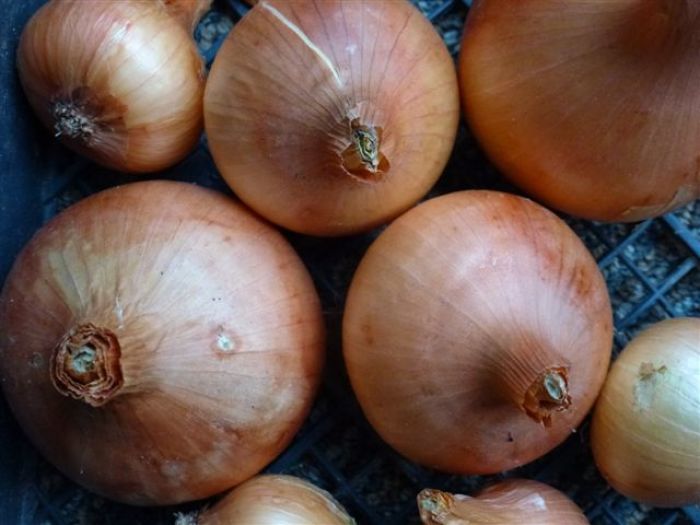
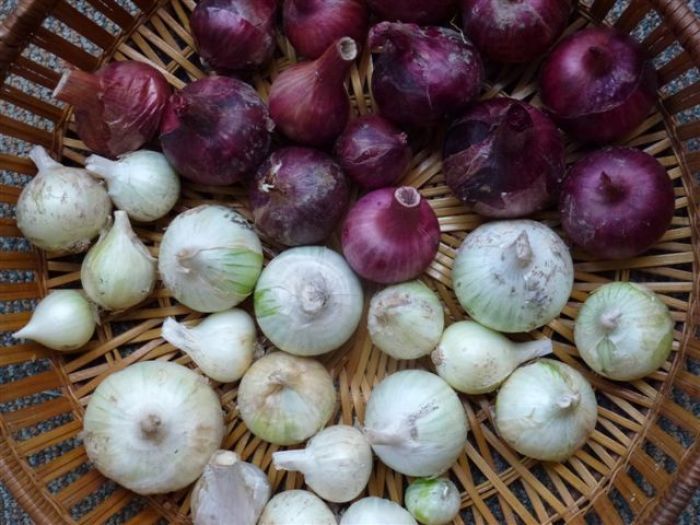


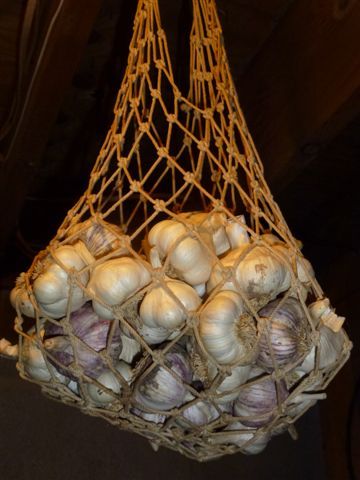
















Comments
Log in or create an account to post a comment.
Sign up Log in